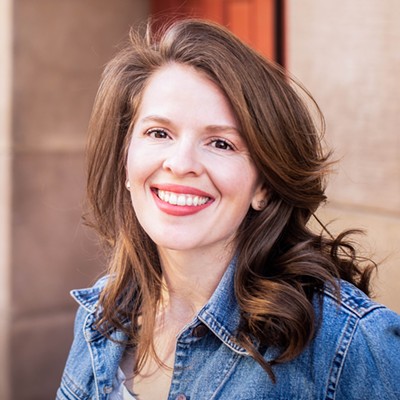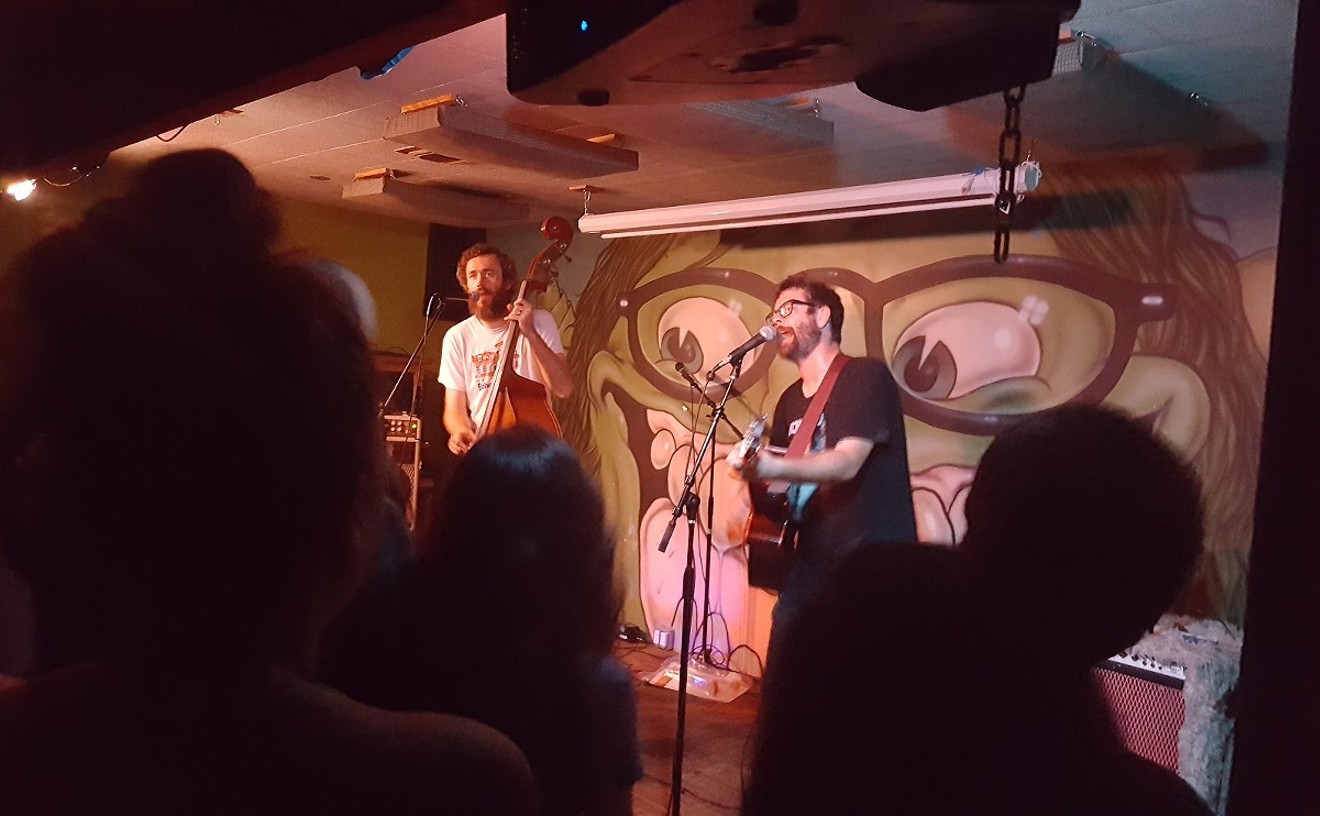If there’s one thing to know about dancers, it’s that they're seemingly always on the move. This is no exception for Jordan Daniels, a 25-year-old dancer, instructor, and choreographer.
Daniels grew up performing musical theater in church, and attended high school at Arizona Conservatory for Arts and Academics. “Half of us were really into the arts,” Daniels says. “I just always took dance class, and they always needed boys. I was very lucky to get a lot of training that I didn’t even know I was getting.”
He then studied at Scottsdale Community College, where the dance program is “scary good for how cheap is,” and went on to finish his undergraduate degree in performance dance from Southern Methodist University in Dallas. He also spent a year in Los Angeles. But, he says, “I realized I wasn’t good enough to not keep training.” He returned to Phoenix.
At this point in his career, Daniels mostly instructs dance classes for both adults and children. He’s part of the faculty at Ballet Arizona, Arizona School for the Arts, and Full Out Performance Dance Company in Gilbert. He’s also spent time at Phoenix Center for the Arts and CONDER/dance in Tempe. He's also working on a solo show premièring in September or October.
“I never pictured being a dancer,” Daniels says. “I always just pictured performing and creating, and dance just always seemed to keep producing for me.”
With a schedule like this, Daniels has to keep in mind what’s most important to his craft. These are his five essentials for performing, teaching, and staying informed.
His Body
Daniels’ “body instrument” or “creation tool” is an obvious essential to a dance.
“I think it’s important in how I make work that I’m able to access my body in a way that’s a little bit more thoughtful than most dance allows,” says Daniels, who’s been dealing with a back injury for roughly two years.
When approaching a project, he tries to understand what’s going to be needed from him, and plan for it. It could be extreme core strength or dropping five pounds to be shirtless in a piece — “stupid things like that.”
Training, therefore, is key. “I think it prepares my body to just be susceptible to anything, because I like to change things pretty regularly, and if my body’s not ready to handle that, then we have a problem.”
Content
“I think people just like to see dance instead of this deeper, darker thing,” he says. “I think dance just by itself can get really boring without all these mixed emotions.”
When starting a project, he says he doesn’t always start out with an objective, but usually will arrive at one. For instance, his last piece started with wanting to use Sam Cooke music, though Daniels says his initial intent was to explore cultural or social expectations surrounding him.
“We’re going through such a huge race riot right now in this country, and his music was created because of race riots, so I don’t think I would have paired some of the connections to contemporary life if I would have just been like, ‘Here’s some Sam Cooke music; let’s dance.’”
His Computer
More specifically, “A MacBook Air I got on … credit,” he laughs.
Daniels likes to use multimedia for his dance pieces, along with choosing the right music, creating videos, finding inspiration, and digging in to his muses.
For his Sam Cooke piece, he watched videos of an early performance with a simple spotlight on a 20-something Cooke. “I was really inspired by the idea of the spotlight,” he says, “And I think a woman in a spotlight is just classic.”
A portable computer is also necessary to back up his aforementioned “content.” “I think research is so necessary,” he says. Daniels admits he’s not a researcher in the sense of all-nighters at the library, more of a 15-tabs-open on his MacBook during a break in rehearsal.
A Space
“Generally, I don’t like to work on myself, I like to work on other dancers,” Daniels says. “And I need a space because I find my work takes a little bit more time.” He says he wants to avoid the concept of rehearsing twice, and putting it on a stage.
“I find real content is explored when time is taken; there’s nothing worse than grazing over something you could have had in your piece of art because you didn’t take the time to experience it.”
Community
“In this city, it’s so insular sometimes, so it’s really nice to have a group,” Daniels says, “because that means people in this city are interested in going out.”
Daniels says he’s been building his list of go-to dancers for his performance pieces for more than a year, and tries not to hire anyone without capital. He explains many Phoenix dancers do what they love, but can also have three part-time jobs to support themselves, “and that is why we need to pay our dancers.”
Daniels says a group of people who are interested in your work is crucial, especially among local artists. Otherwise, he says, when you’re in the middle of three months of creation, and you’re sitting by yourself, you’ll think, “What is this even doing, who is this even changing, what is this even affecting?” But, “then 40 people come and you’re like, ‘Phew, good.'”
[
{
"name": "Air - MediumRectangle - Inline Content - Mobile Display Size",
"component": "18478561",
"insertPoint": "2",
"requiredCountToDisplay": "2"
},{
"name": "Editor Picks",
"component": "16759093",
"insertPoint": "4",
"requiredCountToDisplay": "1"
},{
"name": "Inline Links",
"component": "17980324",
"insertPoint": "8th",
"startingPoint": 8,
"requiredCountToDisplay": "7",
"maxInsertions": 25
},{
"name": "Air - MediumRectangle - Combo - Inline Content",
"component": "16759092",
"insertPoint": "8th",
"startingPoint": 8,
"requiredCountToDisplay": "7",
"maxInsertions": 25
},{
"name": "Inline Links",
"component": "17980324",
"insertPoint": "8th",
"startingPoint": 12,
"requiredCountToDisplay": "11",
"maxInsertions": 24
},{
"name": "Air - Leaderboard Tower - Combo - Inline Content",
"component": "16759094",
"insertPoint": "8th",
"startingPoint": 12,
"requiredCountToDisplay": "11",
"maxInsertions": 24
}
]











